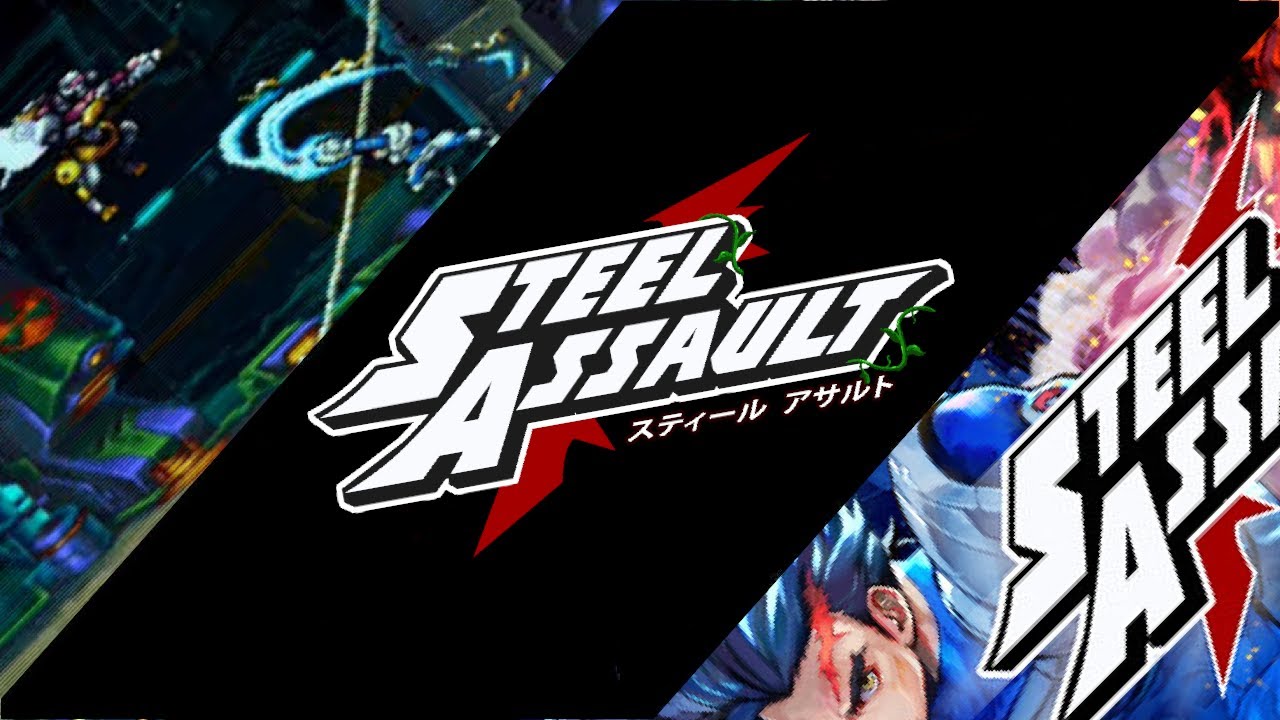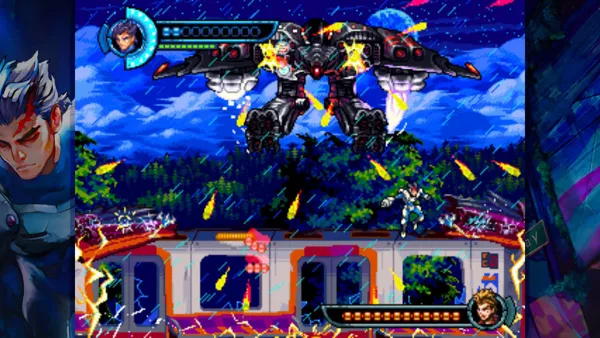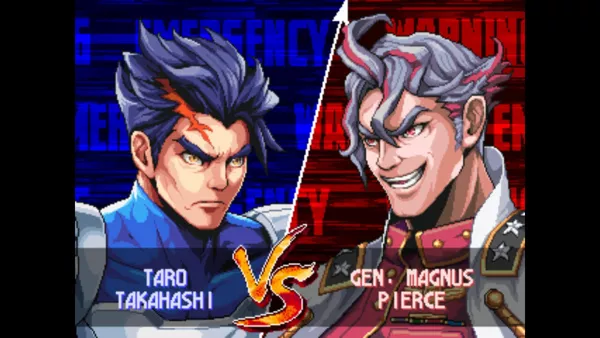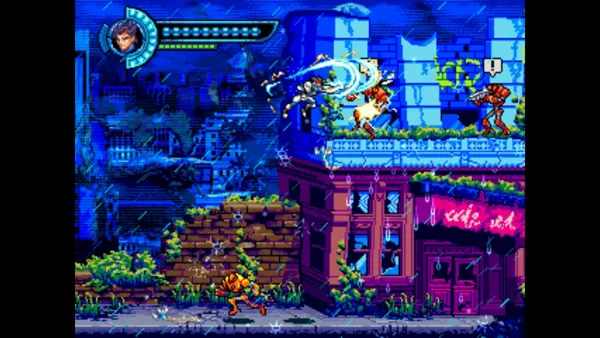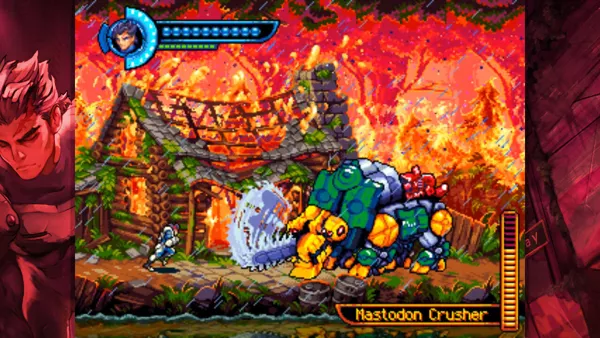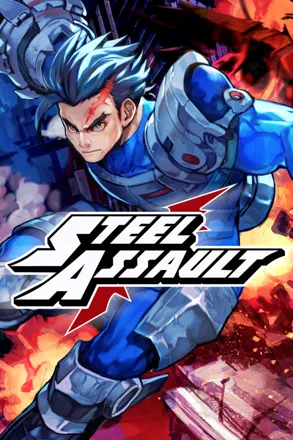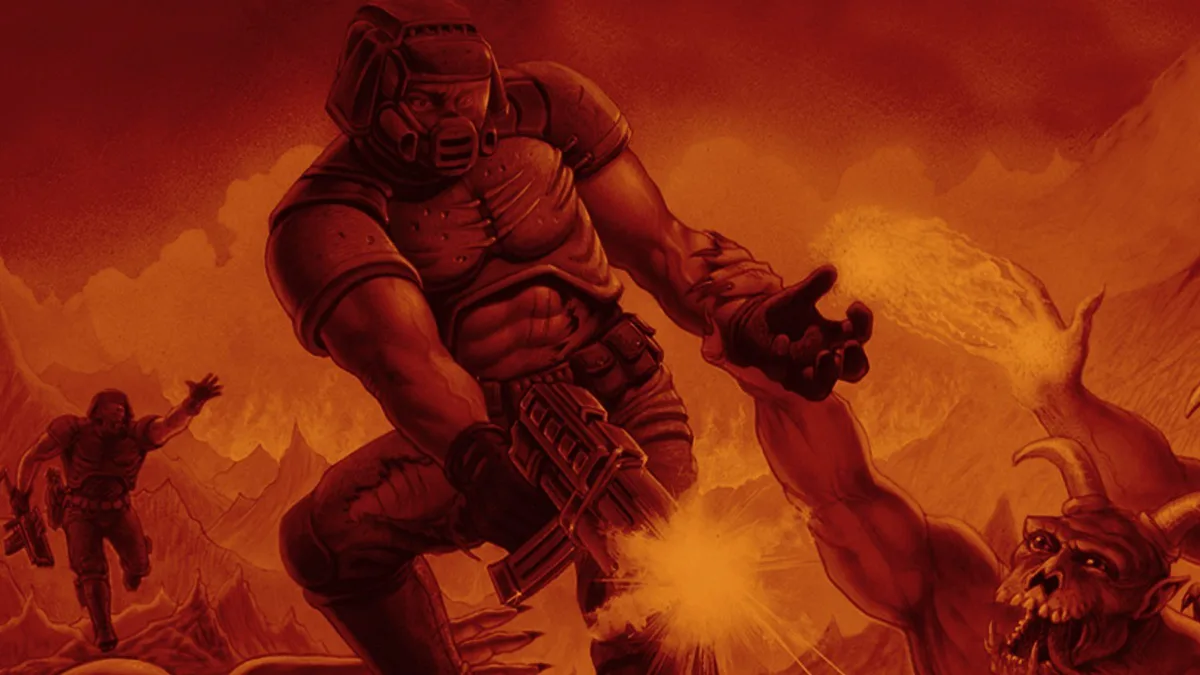(HEY YOU!! We hope you enjoy! We try not to run ads. So basically, this is a very expensive hobby running this site. Please consider joining us for updates, forums, and more. Network w/ us to make some cash or friends while retro gaming, and you can win some free retro games for posting. Okay, carry on 👍)
Steel Assault: A Retro Review on the Nintendo Switch
In an era where high-definition graphics and expansive open-worlds dominate the gaming landscape, it’s refreshing to see a title like “Steel Assault” carve out a niche for itself with unapologetic retro flair. Developed by Zenovia Interactive and released on the Nintendo Switch, this game is a love letter to the 16-bit classics that many of us grew up with. Let’s dive into a detailed review of this platforming gem, examining every aspect from its development to its replay value.
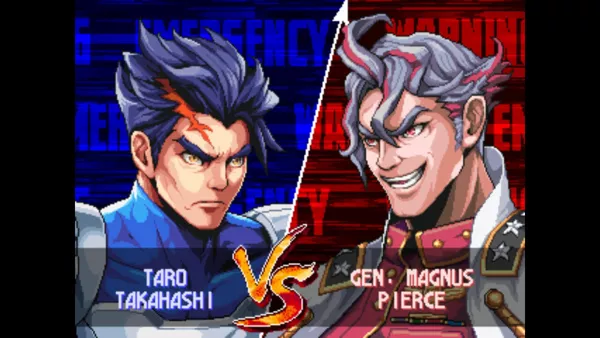
Developer’s Vision and Aesthetic Achievement
Zenovia Interactive may not be a titan in the industry, but with “Steel Assault,” they’ve punched well above their weight. This indie studio has managed to encapsulate the essence of classic arcade games, delivering an experience that’s both familiar and fresh.
The visual palette of “Steel Assault” is nothing short of a pixel art masterpiece. The game’s sprites are brimming with character, animated with a level of detail that rivals the celebrated titles of the 16-bit era. The backgrounds are meticulously crafted, featuring a vibrant mix of dystopian landscapes that are both grim and gorgeous.
The auditory experience complements the visuals perfectly. The soundtrack, with its chiptune beats, is a love letter to the era of synthesized video game music. It’s catchy, propulsive, and utterly fitting, crafted with an understanding that a great game score doesn’t just accompany the action—it enhances it.
Gameplay: The Heart of Retro
“Steel Assault” is a 2D action platformer that is both punishing and exhilarating. Players take control of Taro Takahashi, a resistance fighter battling through a post-apocalyptic America to take down a tyrannical ruler. The game’s control scheme is tight and precise, essential for navigating the gauntlet of challenges that Zenovia has laid out.
Taro’s primary tool is his electric whip, which doubles as a weapon and a grappling hook. This mechanic is central to “Steel Assault’s” gameplay, allowing for thrilling platforming and combat. Players can swing across chasms, scale walls, and zap enemies, all with a satisfying crack of electric energy.
Combat is straightforward but challenging, requiring quick reflexes and strategic use of Taro’s abilities. The game’s difficulty curve is steep, with a variety of enemies and bosses that will test even seasoned platformer veterans. The result is a rewarding experience that captures the essence of what made us fall in love with the genre in the first place.
Story: Simple but Effective
“Steel Assault” doesn’t complicate its gameplay with an overly complex narrative. Instead, it opts for a straightforward story that serves as a backdrop to the action. The cutscenes are short and sweet, providing just enough context to keep players motivated without bogging down the pace. It’s a story of rebellion, of an underdog rising against oppression—a timeless tale that resonates with the rebellious heart of retro gaming.
Community and Critical Reception
The game was met with enthusiasm from the gaming community, particularly from those who cherish the era it emulates. “Steel Assault” has been praised for its authenticity, challenge, and attention to detail. It’s a game that doesn’t just mimic the style of retro classics; it embodies their spirit.
“When I play ‘Steel Assault,’ I’m not just reliving my childhood; I’m appreciating how far we’ve come. This game is a bridge between generations,” said Alex Mercer, a dedicated member of the “Retro Replay” community.
Facts and Replay Value
Here are four quick facts about “Steel Assault”:
- The game features a unique zipline mechanic that enhances both mobility and combat.
- It offers multiple difficulty modes, including a hardcore mode for the ultimate challenge.
- The game’s developers have included a variety of visual filters to mimic the look of classic CRT televisions.
- “Steel Assault” was designed to be speedrun-friendly, offering extra replayability for competitive players.
The replay value of “Steel Assault” is substantial. With alternate gameplay modes, hidden collectibles, and a scoring system that encourages perfection, there’s plenty to come back for. The game is a challenge to master, and for many, the allure of a better run is irresistible.
Final Thoughts and Resources
“Steel Assault” is a testament to the enduring appeal of the retro gaming experience. It’s a game that respects its roots while offering something new to both veterans and newcomers to the genre.
For those interested in exploring more about “Steel Assault” or sharing their experiences with like-minded individuals, the following resources are invaluable:
- Zenovia Interactive’s official website, which offers insights into the game’s development: https://www.zenoviagames.com/steel-assault
- The Nintendo eShop page for “Steel Assault,” where players can purchase and download the game: https://www.nintendo.com/games/detail/steel-assault-switch/
The verdict.
Graphics - 75%
Sound - 82%
Gameplay - 77%
Replay value - 77%
78%
When I play 'Steel Assault,' I'm not just reliving my childhood; I'm appreciating how far we've come. This game is a bridge between generations.
 Retro Replay Retro Replay gaming reviews, news, emulation, geek stuff and more!
Retro Replay Retro Replay gaming reviews, news, emulation, geek stuff and more!
